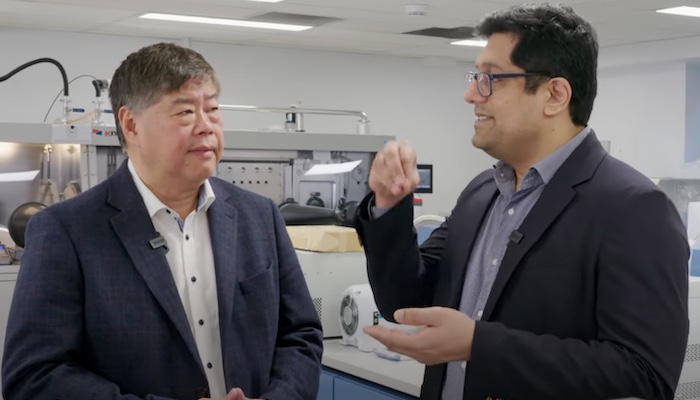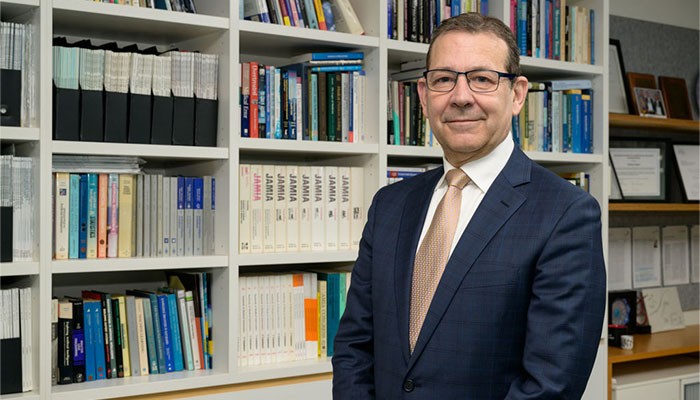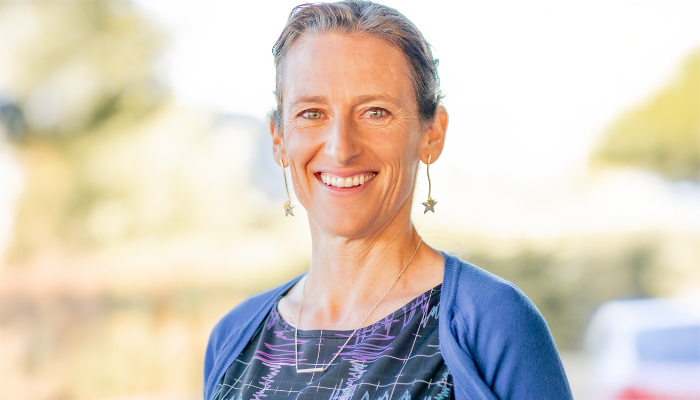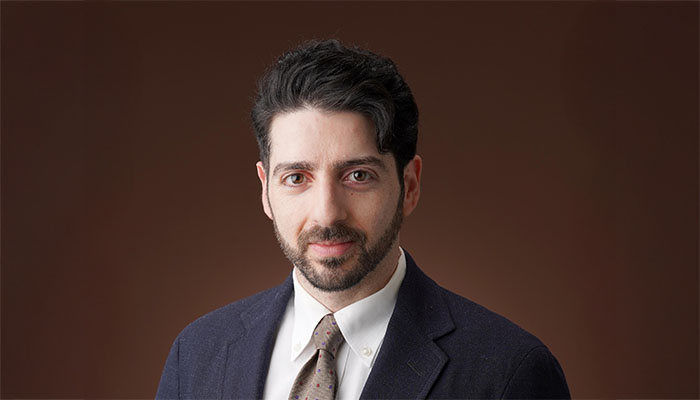Macquarie University has licensed breakthrough silver extraction technology to ASX-listed Lithium Universe in a partnership that could transform how Australia recycles solar panels.
The silver trapped inside Australia’s discarded solar panels equates to the country’s biggest silver mine, according to researchers who have developed a new way to extract this valuable metal without destroying the panels.
Dr Binesh Puthen Veettil and Dr David Payne are co-leaders of a team from Macquarie University’s School of Engineering who hold a provisional patent for their precision method which extracts silver components, while still leaving other materials intact for reuse.
This technique complements the team’s patented solar-panel microwave-powered delamination technology, also licensed by Lithium Universe under the commercial partnership.
“We can selectively remove silver without touching other metals like aluminium, and without impacting the silicon cells and other components,” Dr Veettil says. “Our solution is like a pressure washer for removing silver.”Lithium Universe Chief Executive Iggy Tan with Macquarie University's Dr Binesh Puthen Veettil
The technology addresses a growing waste problem as more and more solar panels reach the end of their 25-year lifespan. The Australian Energy Council states global solar panel waste will reach 60-78 million tonnes by 2050, with Australia alone accumulating one million tonnes by 2035.
Each panel contains about 20 grams of silver worth A$36 (US$23), but conventional recycling methods destroy the panels to extract it. Only 15 per cent of used solar panels are currently recycled.
Rising demand for silver
As industries globally from electronics to renewable energy compete for silver, demand is surging by seven per cent annually, projected to reach around 20 million kg in 2025.
The market faces a shortage of 3.3 million kg this year as mining struggles to keep pace.
Silver prices have more than doubled from just under US$600 (A$920) per kilogram in 2018 to US$1250 (A$1913) per kilogram today.
ASX-listed Lithium Universe has acquired global rights to the Macquarie technology through an exclusive licensing agreement worth more than A$500,000 (US$320,000) over 20 years.
Precision Extraction Process
The Macquarie team’s Jet Electrochemical Silver Extraction (JESE) technology works like a precision cleaning tool, directing a thin stream of weak acid directly onto the silver in solar panels, dissolving the metal in seconds while leaving everything else untouched.
“The silicon wafer remains intact and uncontaminated, making it suitable for reuse in semiconductor manufacturing,” Dr Veettil says.
Macquarie University's Dr David Payne with one of the solar panels.
Traditional recycling grinds entire panels into powder then uses harsh chemicals, destroying all components. The Macquarie method preserves glass sheets and silicon wafers while extracting pure silver.
The silver extraction technology works alongside the team’s innovative solar panel delamination, licensed by Lithium Universe in July, which uses microwave energy to separate glass, silicon and other components without grinding or a high-temperature furnace.
Together, these technologies can recover intact glass sheets, preserve silicon wafers and extract pure silver from each panel, with greater than 77 per cent current efficiency and with minimal waste.
Lithium Universe will complete research and development before commercial deployment is in place, by 2032, paying annual licensing fees and sales royalty.
“We have built a strong, solutions-focused partnership combining Macquarie’s world-class research with our commercial vision,” says Mr Tan.
“Together, we are delivering a breakthrough recycling solution that recovers high-purity silver while preserving wafer integrity,” he adds.
Dr Veettil says the technology could potentially later expand to extract other valuable metals including gallium, indium and copper from discarded solar panels.
“This collaboration shows the impact university research can have when paired with industry vision,” says Professor Sam Muller, Executive Dean of the Faculty of Science and Engineering.
“As Australia moves toward its target of 82 per cent renewable energy by 2030, we’re not just solving the solar waste problem – we’re creating a new resource stream to meet worldwide demand.”
Watch a video outlining the new technology.
Dr Binesh P Veettil and Dr David Payne are Senior Lecturers in the School of Engineering at Macquarie University.

 Lithium Universe Chief Executive Iggy Tan with Macquarie University's Dr Binesh Puthen Veettil
Lithium Universe Chief Executive Iggy Tan with Macquarie University's Dr Binesh Puthen Veettil 


